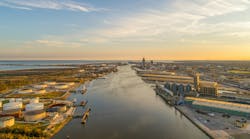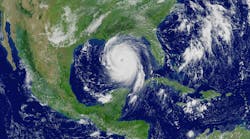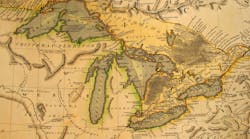One of the most important elements of storm water compliance is understanding your responsibilities as an owner/operator. Irrespective of the stage of construction that you may find yourself in, rest assured that you are operating under a litany of regulations. It is essential that you remain cognizant of your responsibilities, have a system of compliance in place, and ensure that delegated responsibilities are being met by third parties. We will explore these three essentialities in greater detail to come.
Your regulatory commitments go into effect the moment you take ownership of a property, regardless of when you plan to start construction. A property owner is responsible for any environmental issue discovered at their property; they will simply be subject to a separate set of regulations. Vacant, undeveloped land is regulated by many similar standards to those that apply to land under construction, such as dust control, stabilization and storm water discharges. Be sure that any glaring issues are addressed by the previous property owner prior to taking possession and be sure to monitor the property for such issues while it remains idle. Anyone with experience in lot ownership or vacant lot regulation can inform you that there is no shortage of illegal dumping and unauthorized off-road vehicle use, for just a couple examples.
Once you are preparing to mobilize, your first obligation is to develop the Storm Water Pollution Prevention Plan (SWPPP) for the site. A common misconception is that the permit is to be applied for prior to SWPPP creation, but this should not happen under any circumstance. You may even need to submit a copy of the SWPPP with the permit application in certain circumstances, depending on the permitting authority’s requisites and the site’s proximity to protected surface waters. Regardless of who has created the SWPPP, your first responsibility is to read and familiarize yourself with the plan. The SWPPP writer will absolutely make presumptions while developing your plan, and a thorough review is the best way to address and correct the specifics that apply to your site. Amendments are expected and will assuredly be made throughout the life of the project, but this appraisal is the best means by which you may both get acquainted with the plan and make modifications before any errors find their way into the adopted SWPPP. Once you have a plan that is to your liking, you are ready to file for your NOI and prepare yourself for the cavalcade of requirements that take effect upon permit issuance.
Once your permit to discharge storm water has been acquired (along with any other applicable permits), your responsibilities and exposure increase significantly. The regulations that apply to an active construction site are far-sweeping, stringent and enforced at an ever-increasing rate. The SWPPP is a comprehensive document, and it needs to be matched by a comprehensive understanding of its contents. For this reason, many builders opt to hire third party storm water consultants to oversee the SWPPP creation, execution and ensuing upkeep (reports, logs, map updates, etc.). While hiring specialists is effective, remember that the owner/operator is ultimately responsible and liable. There is simply no way to subcontract or delegate your way out of that fact. You are strongly encouraged to remain proactive and engaged in all facets of the compliance process until the permit is closed.
A pre-construction meeting is the ideal time to assemble your storm water team and affected trades. Take this opportunity to review expectations and delegate responsibilities. Basically, every person/entity coming onto your construction site should have at least a rudimentary understanding of storm water practices and principles. At a minimum, they should possess the awareness of how to not cause or contribute to a violation. Annual storm water training is mandated, and the pre-construction meeting is a perfect chance to complete the first training session. Provide the trades with clear expectations, fill out a training log for the session, and have trades complete their subcontractor certifications. Simply providing a copy of the SWPPP is insufficient, as you cannot expect a trade professional who is not directly working in storm water to read such an extensive document. Explain the site’s overall goals and objectives, as well as your expectations for each party involved in the project. Remember, they are called trade partners for a reason, and they should always be working with you. Give them directions then hold them accountable as necessary.
Now that operations are underway, it is critical that you have a system in place to maintain compliance. A consultant can manage your SWPPP, inspections and records, but they typically visit your site once per week. Storm water pollution prevention is a full-time job and the adage that “it takes a village” is also applicable to achieving compliance. If we could consolidate these sizeable construction general permits into a single sentence, it’d be: “Do not allow anything except uncontaminated water to leave your site!” Water migrating from your site needs to be free of sediment, debris, oils, chemicals or any other foreign fluids/objects. Solids should never leave your site, and they include but are not limited to sediment, trash, track-out and airborne dust. Monitor your perimeters, storm drains, outfalls, outlet structures and areas of flow such as curb and gutter accordingly. If you apply this simple logic to your day-to-day operations, the overwhelming number of regulations and countless responsibilities by which to comply with them will seem a lot less daunting.






